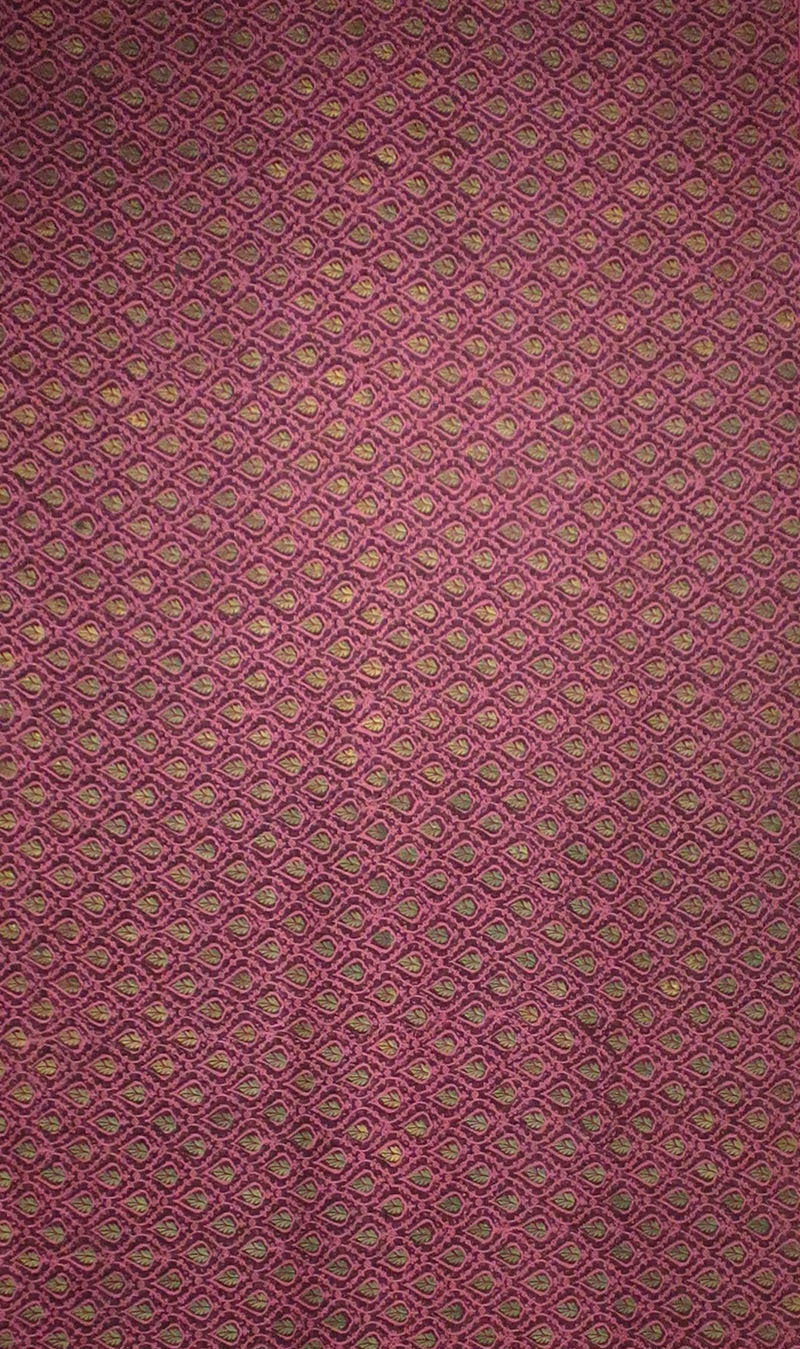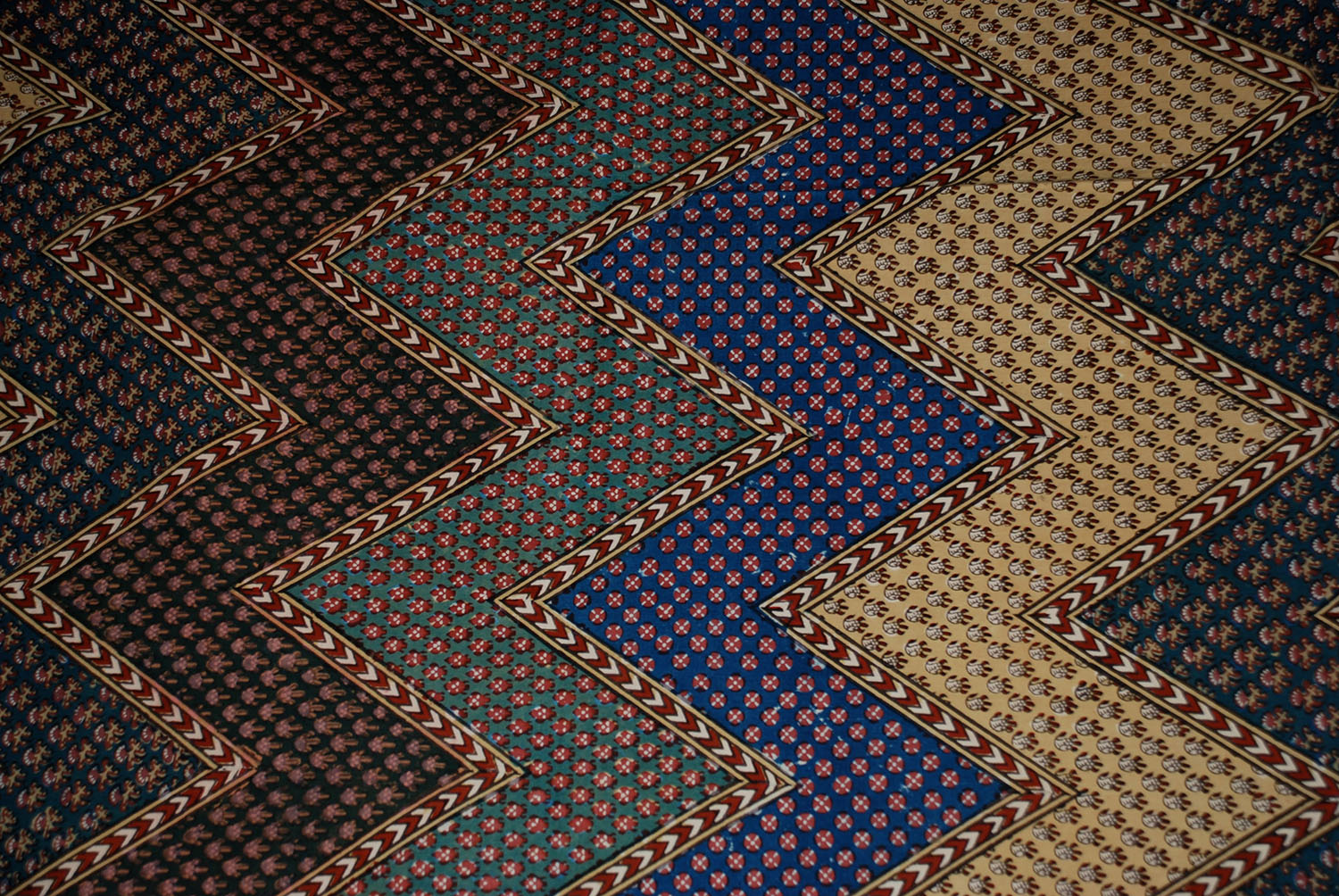ARTICLE
Bagru Printing
As with other block printing traditions such as Bagh and ajrakh, karigars print the outline before progressing to the filler colours and other finer details of the designs. Usually, a set of three hand-carved blocks are used to create each floral motif — a rekh block, a background colour block called gadh and a colour-detailing block called datta. The blocks are carved out of sheesham wood, with the process of carving and seasoning each block set taking about a week.
In the past, chippas were printed on coarse, hardy reja cotton for local peasant and pastoral communities for garments such as ghagras, odhnis, sarees and pagdis. Bagru prints were also used for household products such as angocha, bedspreads, cushion covers and razai. Differing stylisations and combinations of the motifs and colours were developed for each community that wore the prints, allowing traders, farmers and artisans to be identified on the basis of the patterns on their clothes.
The original patrons of Bagru prints included Rajputs as well as local communities. Over the last few centuries, the prints have been produced for local consumption, while other floral printed fabrics, such as chintz, have been heavily traded and appropriated in the West. Today, there are about fifty to sixty blockprinting workshops in Bagru, with a community of over five thousand workers. Both women and men participate in the printing process. To cater to contemporary markets, printers use fine fabrics that aren’t limited to cotton. While most of these workshops produce woodblock-printed cloth, some have now employed the screen-printing method, which is less laborious. Many karigars also use chemical dyes.
Bibliography
Our website is currently undergoing maintenance and re-design, due to which we have had to take down some of our bibliographies. While these will be re-published shortly, you can request references for specific articles by writing to hellomapacademy@map-india.org.








